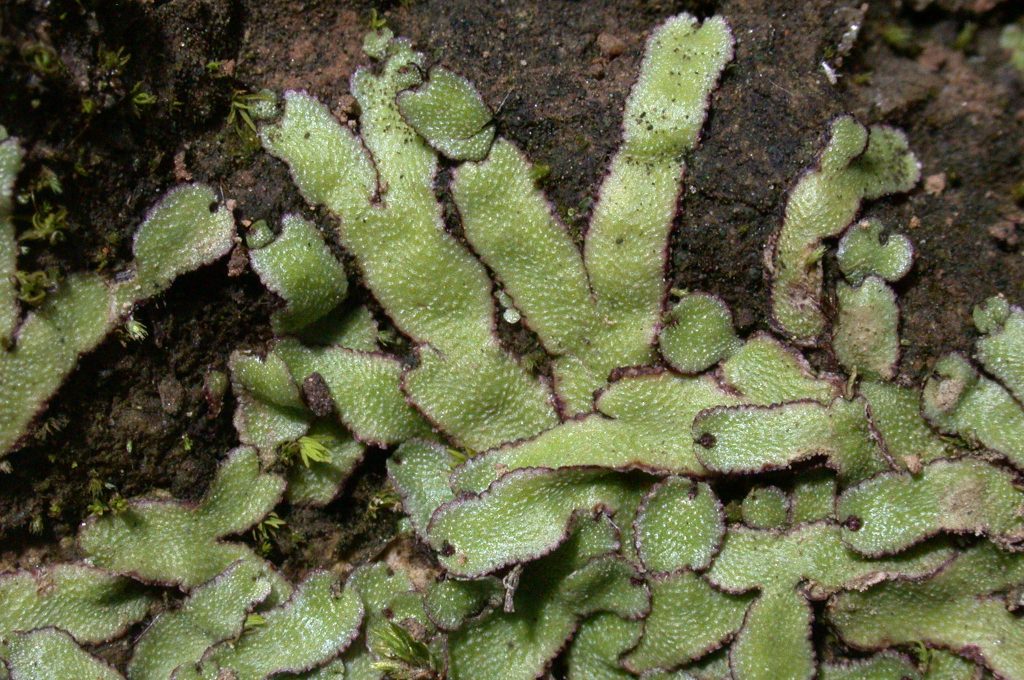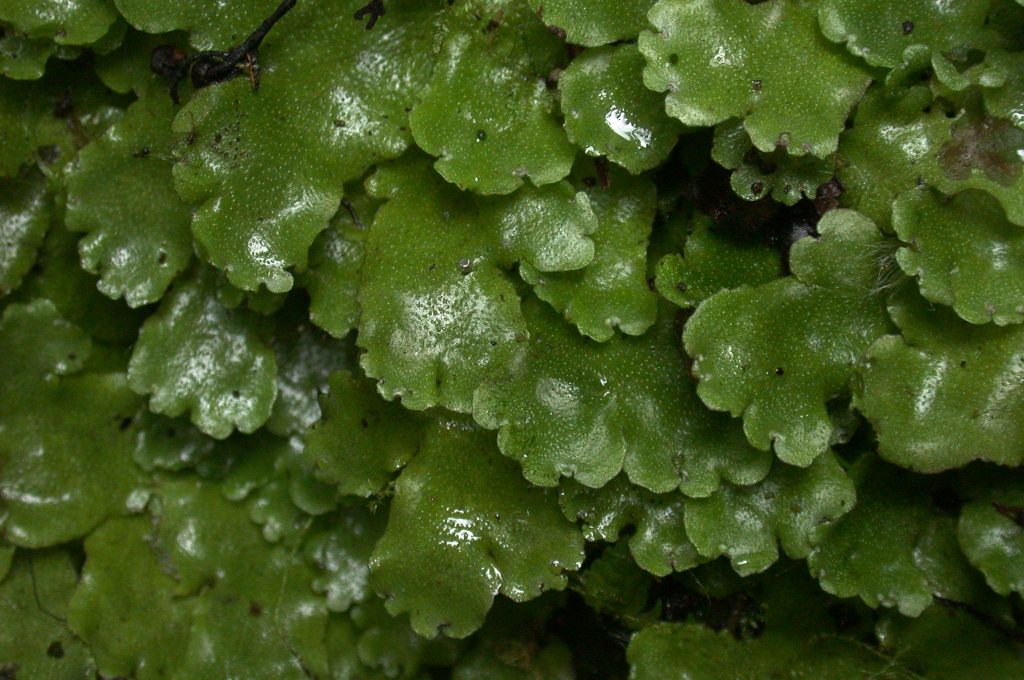One of the main problems with sampling largely from herbarium specimens, rather than from material that has been specifically collected for DNA work (rapidly dried in silica gel then maintained at low humidity), is that the quality of the DNA is unpredictable and usually rather poor. Therefore, despite starting out with 169 accessions and about 20 species of Marchantia, the actual successes, where we were able to get good quality DNA sequence data, were substantially lower. What we currently have is a slightly unbalanced data matrix, with 82 Marchantia accessions for rbcL, and 78 Marchantia accessions for psbA-trnH.
We also sequenced both rbcL and psbA-trnH from material of two accessions that we thought were Marchantia but where the sequences turned out to be Reboulia (from Texas) and Wiesnerella (from Bhutan). A quick check of the herbarium voucher specimens for both of these showed that they represented mixed collections of more than one complex thalloid species, for which the “wrong” plant parts had ended up in our silica dried tissue collection. Taking fortune from misfortune, both Reboulia and Wiesnerella form quite adequate outgroups for the phylogeny!
Out of the 20 species that we HAD hoped to sample, we ended up with only 12 named Marchantia species for rbcL (Marchantia polymorpha, M. paleacea, M. linearis, M. papillata, M. inflexa, M. emarginata, M. pinna, M. chenopoda, M. debilis, M. hartlessiana, M. quadrata and M. romanica), and 15 for psbA-trnH (Marchantia polymorpha, M. paleacea, M. linearis, M. papillata, M. inflexa, M. emarginata, M. pinna, M. chenopoda, M. debilis, M. globosa, M. pappeana, M. hartlessiana, M. subintegra, M. quadrata and M. romanica); we also had three Marchantia polymorpha subspecies (polymorpha, ruderalis and montivagans) and two Marchantia paleacea subspecies (paleacea and diptera).
That’s a little disappointing, representing, as it does, fewer than half of the 38 currently recognised species in the genus. However, we did also sequence a number of Marchantia accessions that had not been determined to species, and although many of them were good DNA matches to species that we had sampled, several are clearly different to everything else that we have included: one distinct lineage in Yunnan, China, another that occurs in Yunnan and Nepal, and a third in Indonesia and Malaysia. That’s balanced again by taxa that may not have been identified correctly; the psbA-trnH sequences from African material of M. debilis, M. globosa, M. pappeana and M. polymorpha, for example, are identical.
Intriguingly, in the “Preissia” clade, as well as M. romanica, there appear to be two lineages of Marchantia quadrata, one consisting of accessions from Denmark, Sweden and Sichuan, China, and the other with accessions from Svalbard, Norway and Utah, USA. These may tie in with subspecies quadrata (for the first lineage) and subspecies hyperborea (for the material from Svalbard and Utah), but the degree of genetic divergence is far higher than that found between many of the recognised species in Marchantia. It is a bit disconcerting, however, to notice that we have managed to overlook any Marchantia quadrata material from Scotland in our sampling!
The next step in the project, before it’s time to reveal any of the phylogenetic trees I’ve alluded to, is a phase of reciprocal illumination where we reconcile morphological information from the herbarium specimens with the information derived from the molecular sequence data. In other words, it’s time to double check our plant identifications, a part of the project that’s now in the capable hands of Dr David Long; the pile of Marchantia specimens is already on his desk!
Relevant posts
A rapid phylogeny of Marchantia, from the RBGE collections. I. Sampling
A rapid phylogeny of Marchantia, from the RBGE collections. II. Illuminating our sampling


